Hungary is a flower-filled country with a long history of plant cultivation, but since the 15th century, one flower has stood out. Let’s discover the national flower of Hungary: the tulip!
What Is Hungary’s National Flower?
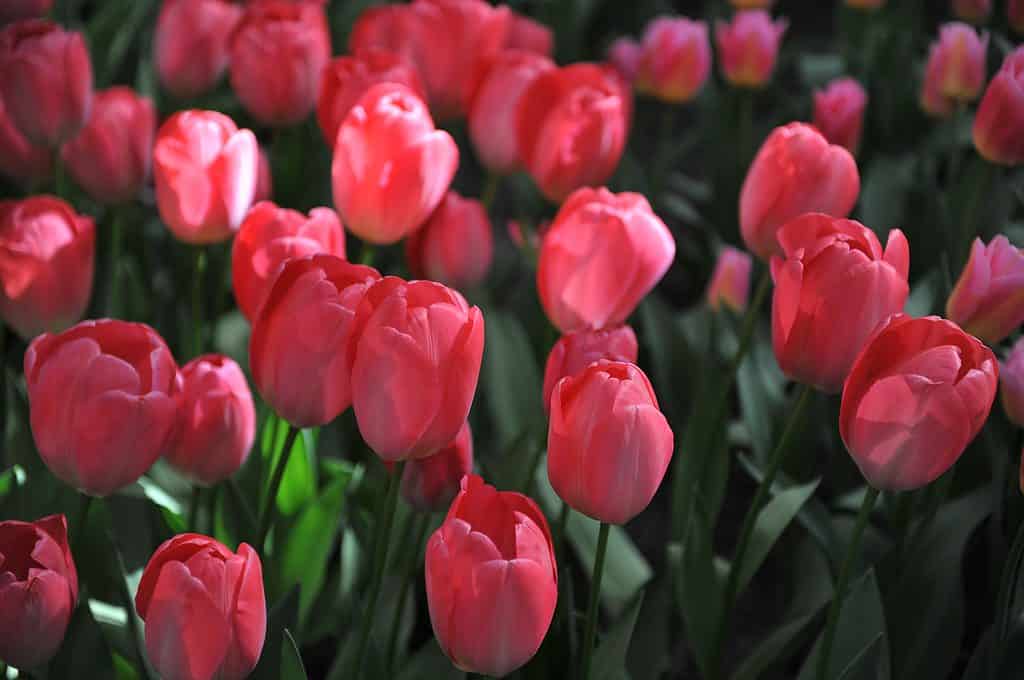
Tulip bulbs were brought to Hungary in the 1400s from Turkey.
©Sergey V Kalyakin/Shutterstock.com
The national flower of Hungary is the tulip. Tulip bulbs were brought to Hungary in the 15th century from Turkey during the Ottoman conquest, and were the Sultan’s (the Ottoman emperor’s) favorite flower.
Tulips are also the national flower of Turkey, Afghanistan, and the Netherlands.
Why Is it Hungary’s National Flower?
Since the 15th century, tulips have been the national flower of Hungary.
Hungarians considered white tulips a symbol of peace, yellow tulips signified friendship, and red symbolized love. A great collection of many colored tulips was a sign of wealth in Hungarian history and symbolized love for the Sultan.
Modern Hungarians regard the tulip as their national flower because it represents their rich history.
Where Is Hungary?

As a landlocked country bordering Slovakia, Croatia, Slovenia, and Austria, Hungary is in central Europe. Pictured is Budapest, Hungary’s capital.
©ZGPhotography/Shutterstock.com
Hungary is situated in central Europe. It spans 93,030 square kilometers (35,920 square miles) and it’s home to 9.7 million people.
It’s a landlocked country bordering Slovakia, Croatia, Slovenia, and Austria. There are no sea borders, but two major waterways called the Danube and the Tisza Rivers. The Danube river splits Hungary in half and all of Hungary sits in its drainage basin.
The main language in Hungary is Hungarian and its capital city is Budapest. Historians think its name derives from the Hun tribes that conquered the area during the 5th century, it has nothing to do with needing a snack!
Hungary’s National Animal
A mythical creature called a Turul is Hungary’s national animal. It’s an eagle of sorts from traditional Hungarian legends.
All About the Tulip
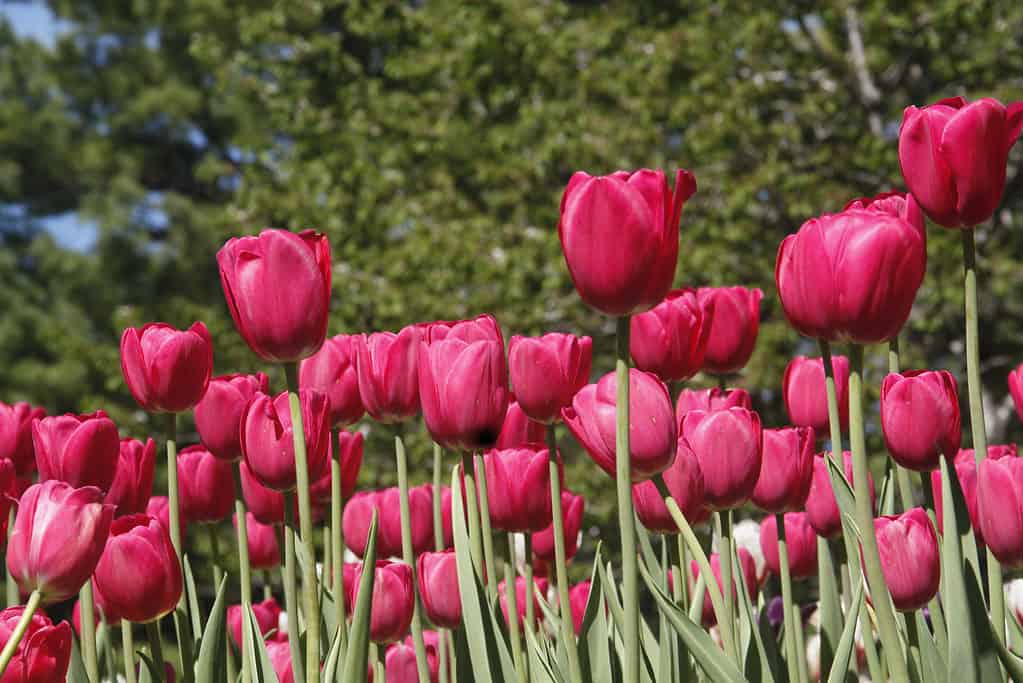
Because they’ve been cultivated for so long, experts struggle to classify tulips.
©Md Shahinur Islam/Shutterstock.com
Tulips are spring flowering bulbs that emerge in early spring and die back to their bulb in late spring. There are thousands of cultivars and they have a really spectacular history.
Experts struggle to classify tulips because they have been cultivated for so many centuries, but they are generally attributed to the Lilieae lily family.
There are 75 naturally occurring species that grew in a stretch of land from central Asia to southern Europe. Tulips naturally prefer steppes or mountains in temperate climates, but since the 1700s they have naturalized across most of the world.
The name tulip is thought to mean “turban” in ancient Persian because tulip petals swathe the stamens, resembling a turban of sorts.
It was the ancient Persians who first cultivated them in 1055, and then in the 1600s, they made their way into central Europe with the Ottoman Empire. Historians think western diplomats saw tulips growing in royal Ottoman courtyards and took them home as gifts from the Sultan. This led to tulip mania in the 1600s!
What was Tulip Mania?
We can’t discover the national flower of Hungary, the tulip, without looking into Tulip Mania!
Tulip mania happened in the Dutch golden age. In 1634, fashionable tulip bulbs became a prized commodity. In one case, a single bulb was traded for acres of land! This economic craze suddenly crashed in February 1637 when buyers couldn’t afford the galactic prices any longer.
Economists describe the 1634 to 1637 tulip mania as the first recorded speculative bubble. The more recent crazes on loom bands, PS5s, and air fryers have all been described as “tulip mania”.
Tulips: Flowers
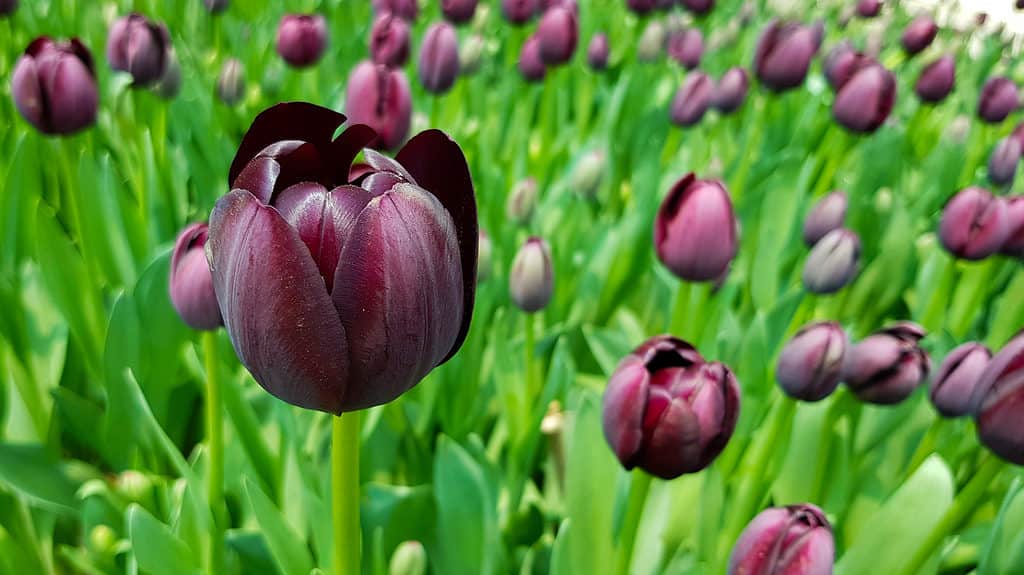
Queen of the Night tulips are a cross between two dark purple tulips.
©Printemps PhotoArt/Shutterstock.com
Tulip mania occurred due to prospective financial gains, but tulips are very beautiful so it’s not hard to see why they became popular.
Their flowers are often showy, standout blooms in bright attention-seeking colors such as orange, red, purple, yellow, and white. They have a different colored blotch near their stamens and last for weeks on end.
The minimum amount of petals on a tulip is four, but many species have more than that. Plant breeders have created ruffled petals, long slim petals, and dots, splashes, and whorls. There really is a tulip to suit everyone, the Ottoman Sultan would be impressed.
However, despite numerous and ongoing attempts, no one has managed to create a pure blue tulip. Only recently was a near-black tulip “Queen of the Night” developed, although this is a cross between two dark purple tulips and is not entirely black, but a deep maroon.
Here’s an interesting fact, tulips carry barely any scent. This is a blessing for hay fever sufferers (I feel you fellow humans!) and was considered a virtue by the tulip-loving Dutch who thought it exemplified chasteness.
Tulip: Foliage
Tulips have very little foliage, varying between two to six leaves and in some rare species up to 12 leaves. Their leaves are cauline, which means they grow on a stem. Tulip leaves are long, strappy, and covered in fine wax that protects them from extreme weather.
Tulip: Height and Spread
There are many different species of tulips, so their height and spread vary greatly.
Some dwarf species reach six inches tall through to giant tulips, which can tower at 26 inches.
What Pollinates Tulips?
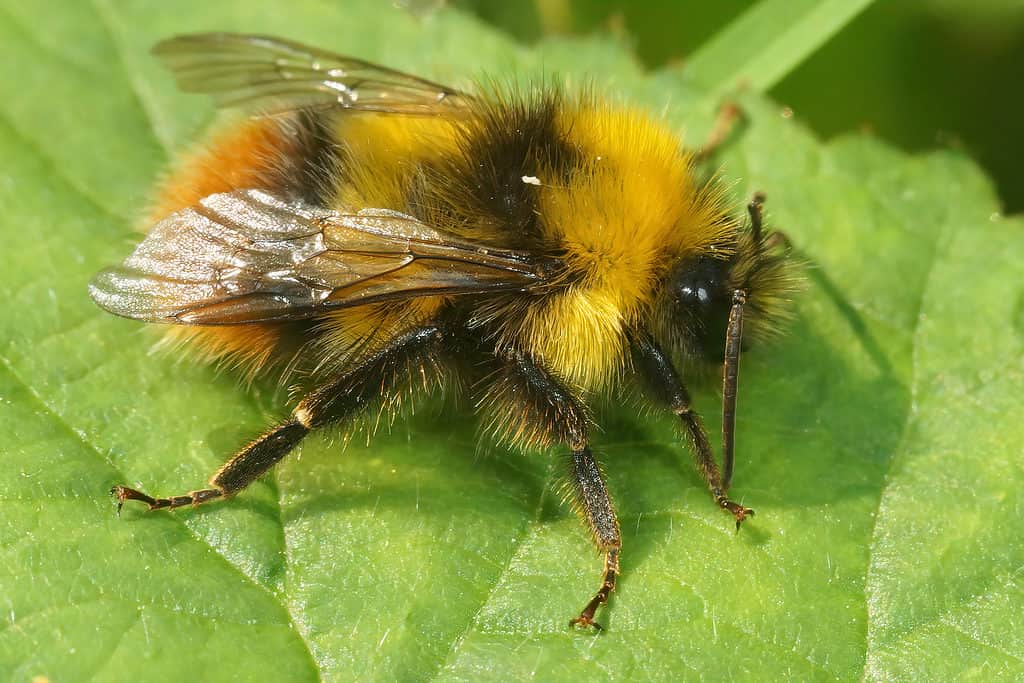
Bees are just one of many insects that pollinate tulips.
©Wirestock Creators/Shutterstock.com
Tulips are pollinated by bees and other insects like hoverflies, moths, and butterflies. Because tulips are an early spring flower, they’re an invaluable source of nectar for early-waking pollinators.
Tulip: Growing Zones
Tulips are native to Asian lands with cold winters and hot summers. They will grow up to zone 7 without issue if the bulbs are well drained, but in zone 8 and above they struggle with heat stress. More on growing tulips in the States below!
How To Grow Hungary’s National Flower: The Tulip
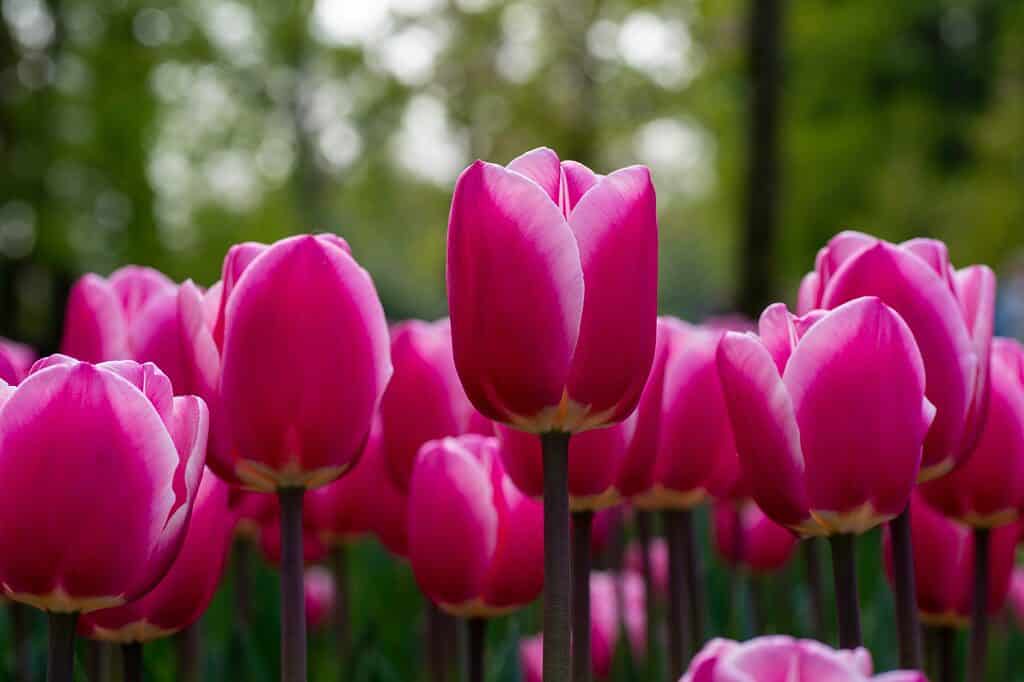
Tulips are particularly easy to grow.
©MBL1/Shutterstock.com
Tulips are easy to grow, and once in place, they can be left to do their thing for years. However, after several years, cultivars tend to lose their flamboyance.
Most gardeners dig up tulips after two to three years and replace them with new vivid bulbs, but don’t throw the old ones away. They are excellent next to a hedge or in open areas beneath trees.
Plant tulip bulbs in late fall ready to bloom in spring. This enables them to gather all the resources they need from winter rain and the soil’s nutrients.
They like lots of rich organic soil, so bulk up your soil with compost or well-rotted manure. Plant them eight inches below the surface and cover the top soil with mulch, which will prevent soil compaction or excessive rain from rotting the bulbs.
In containers, alpine gravel works well, but in the borders, wood bark or wood chippings are good too.
In USDA zones 8 and above tulips struggle to flower because the soil is too hot. It’s best to grow tulips in containers if you live in hot zones, so you can empty them out easily after their leaves have died back and store them somewhere cool.
Two months before planting them out, pop them in a paper bag in the refrigerator for two months to emulate winter cold. This stimulates the bulbs into growth.
Flowers Native to Hungary
We’ve delved into the history of tulip mania and the Ottoman Emperor’s fancies to discover Hungary’s national flower: the tulip, but Hungary is home to some other stunning native flowers too.
Peony
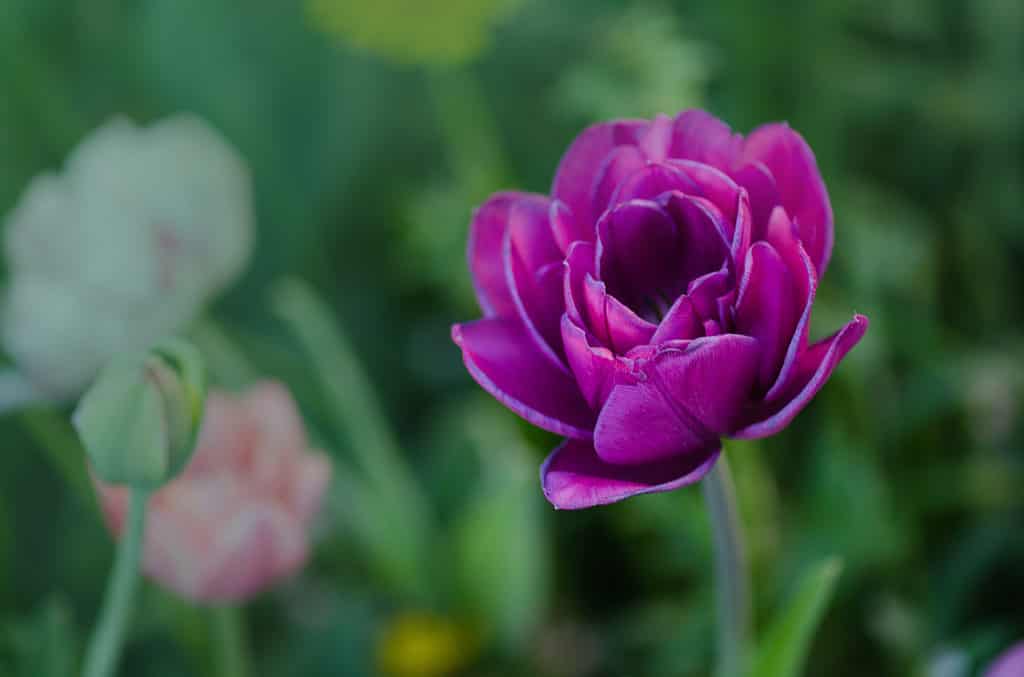
Peonies are another flower native to Hungary.
©LesiChkalll27/Shutterstock.com
Deciduous perennial peonies are native to Hungarian woodlands and they’re usually found wild in mountainous areas. Peonies have large colorful blooms in red, pink, purple, and white. They are popular ornamentals across the world.
Syringa josikaea (Hungarian Lilac)
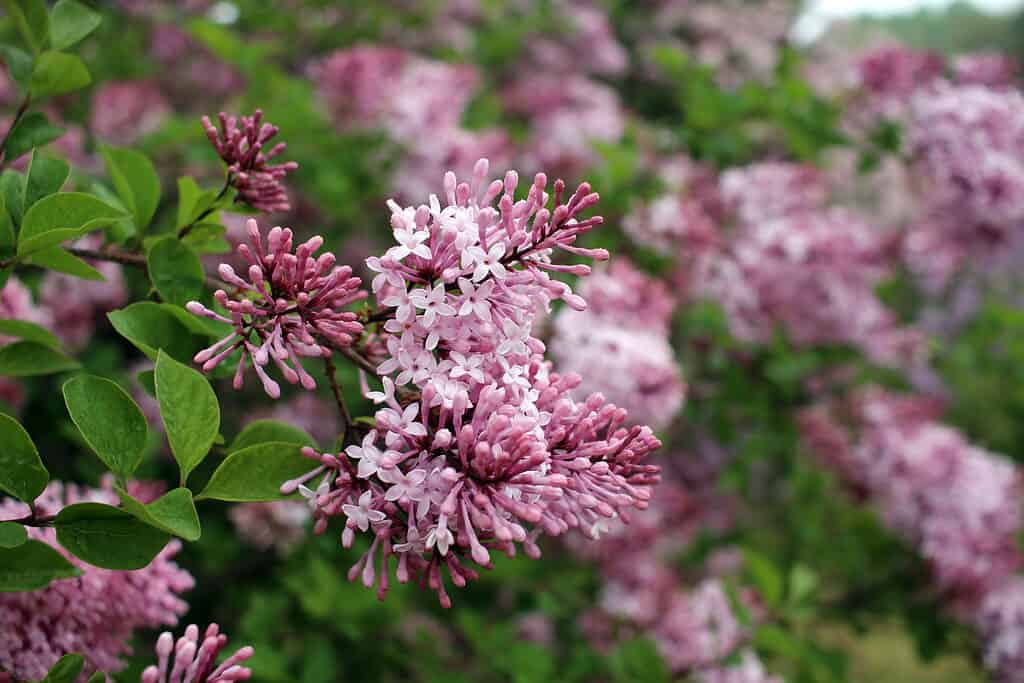
Fragrant pink-purple blooms could indicate a Hungarian lilac.
©Gridyakina Oleksandra/Shutterstock.com
Hungarian lilac is a 2-4 meter deciduous woody shrub that’s smothered in fragrant pink-purple blooms in summer. It’s a pollinator magnet that draws in bees for miles around. It grows wild in the mountains, hedgerows, and open forests of Hungary, and in gardens too.
Crocus tommasinianus (Hungarian Crocus)
This native crocus is an early spring visitor that bees rely on. It’s small and purple with yellow stamens but don’t let its delicate appearance fool you. It blooms when snow is on the ground on chalky hillsides and wooded areas. That’s why it’s commonly called the snow crocus.
Epilobium hirsutum (Great Willowherb)
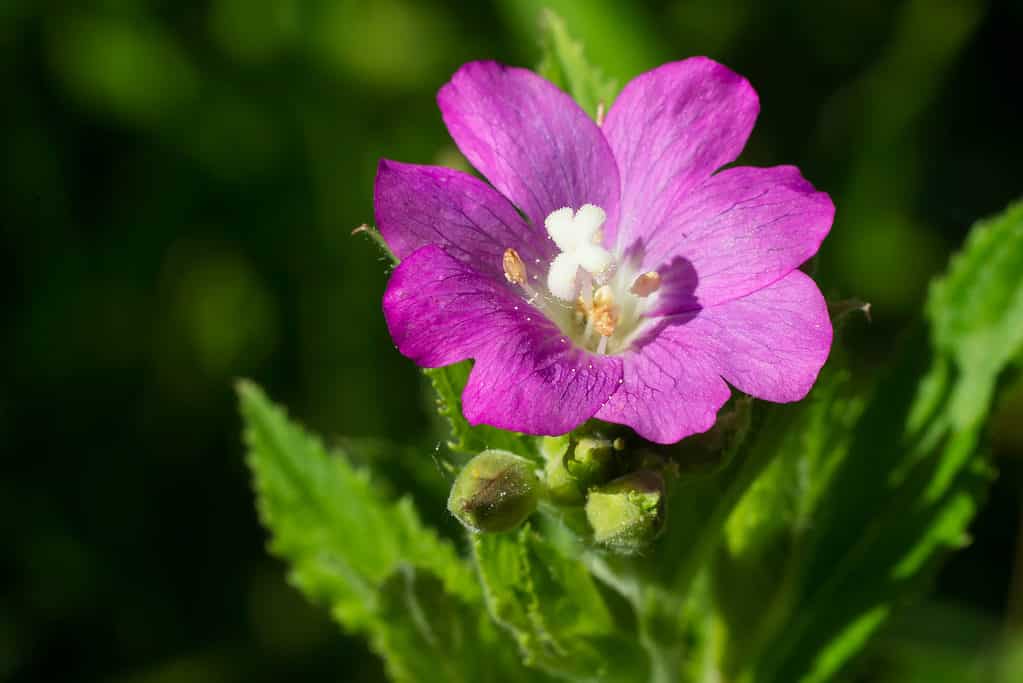
Hairy green foliage and delicate, pink flowers indicate a great willowherb.
©Paul Reeves Photography/Shutterstock.com
This is a tall plant with hairy gray-green foliage and pink delicate flowers. It’s a wildflower native to Hungary’s damp meadows and grassy open spaces near rivers.
It blooms in late summer dispersing its seeds in fluffy cases carried by the wind.
Up Next…
- 9 Flowers Native to Ireland
- 18 Gorgeous Flowers Native to the Philippines
- 15 Most Beautiful Flowers Native to Puerto Rico
The photo featured at the top of this post is © Sergey V Kalyakin/Shutterstock.com
Thank you for reading! Have some feedback for us? Contact the AZ Animals editorial team.






